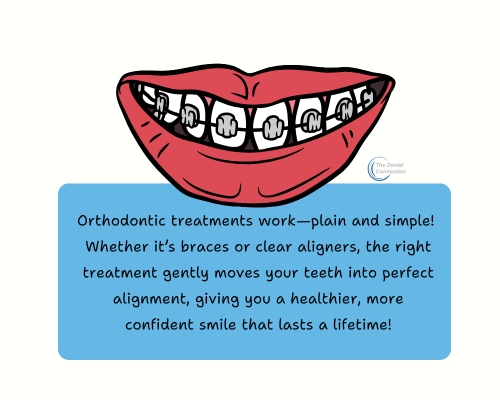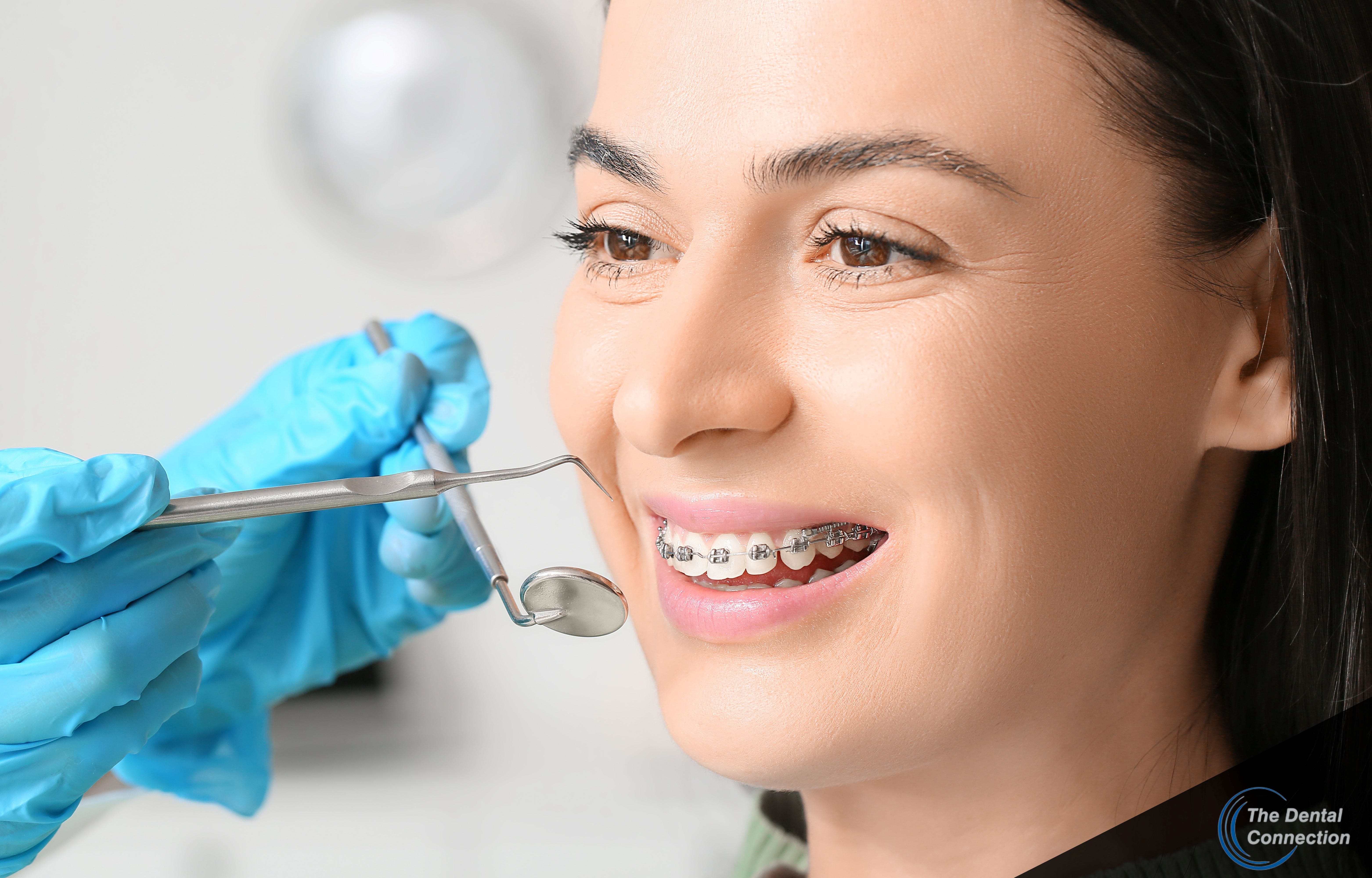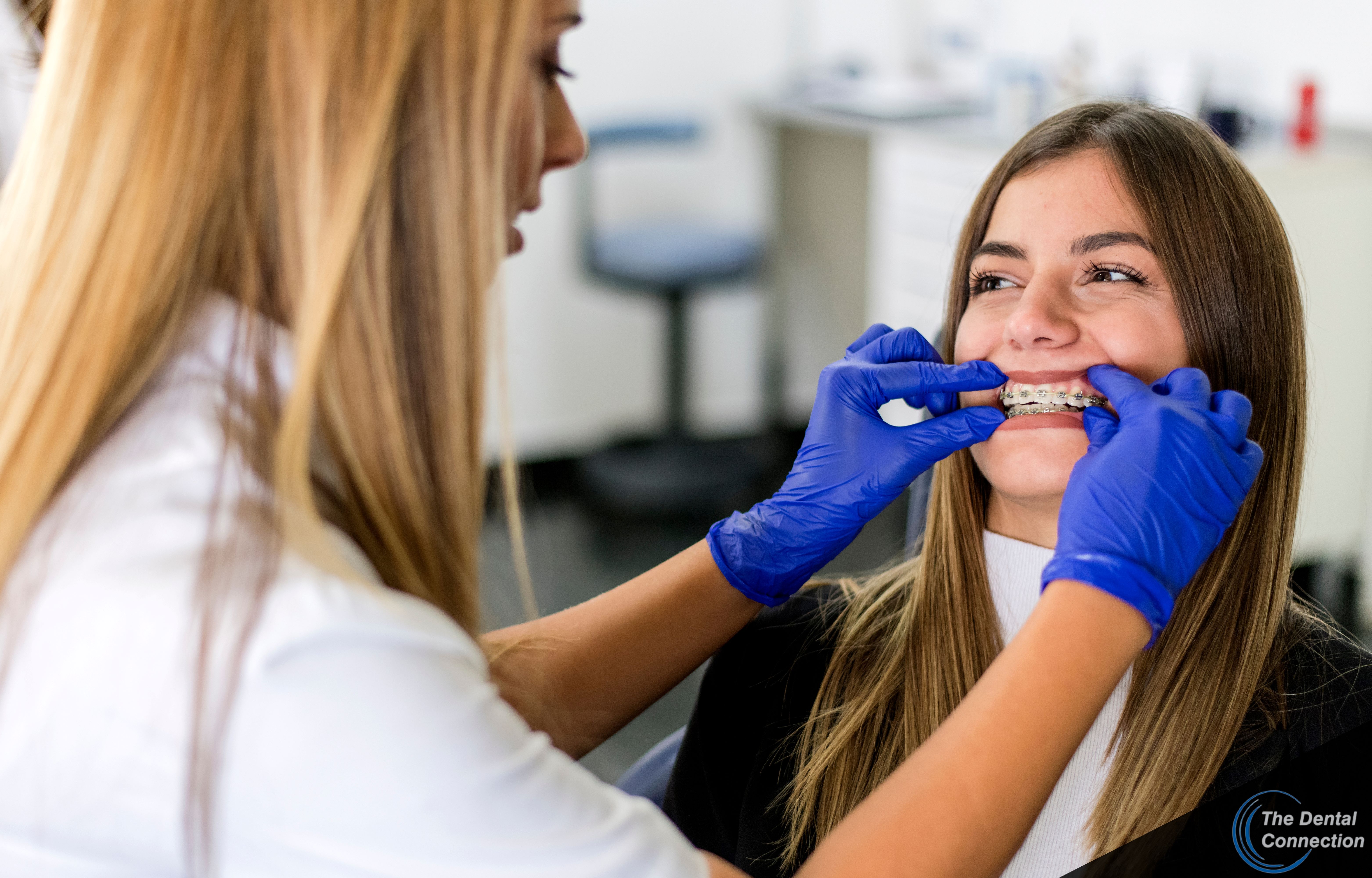General & Cosmetic Dentistry

Getting braces or any orthodontic treatment is an exciting step towards a straighter, healthier smile! But before you begin, it’s important to know what to expect.
Whether you’re considering treatment for yourself or for your child, understanding the process can help you feel more prepared and confident.
At The Dental Connection, we guide our patients through every stage of their orthodontic journey. From choosing the right type of treatment to understanding how long it may take, we want you to feel fully informed before getting started.
So, in this guide, we’ll walk you through the key things you need to know before starting orthodontic treatment with a Surbiton dentist.
Orthodontic treatment is more than just straightening teeth – it’s about creating a healthier, more confident smile that lasts a lifetime.
If your teeth are crooked, crowded, or misaligned, orthodontics can help bring everything into balance, improving both the appearance and function of your smile.
At The Dental Connection, we’ve helped countless patients in Surbiton achieve their dream smile with tailored orthodontic solutions.
Whether you’re considering traditional braces or a more discreet option like clear aligners, orthodontic treatment is one of the best investments you can make in your oral health and confidence.

If you’ve been thinking about straightening your teeth but aren’t sure if it’s worth it, let me tell you – it absolutely is!
Orthodontic treatment isn’t just about looks; it improves your oral health, confidence, and overall well-being. Here are some great reasons to consider getting started.
When you feel good about your smile, you naturally smile more. Whether it's at work, social events, or just taking selfies, having straight teeth can make you feel more confident and self-assured in every situation.
Crowded or overlapping teeth create tight spaces where plaque and food can hide, making brushing and flossing more difficult. With properly aligned teeth, keeping your mouth clean becomes much easier –helping you avoid cavities and gum disease in the long run.
Misaligned teeth can cause bite issues that put strain on your jaw, leading to headaches, discomfort, and even conditions like TMJ (temporomandibular joint disorder). Orthodontic treatment corrects these problems, improving the way your teeth come together and preventing future complications.
Teeth play a huge role in how we speak and chew. If your bite is off, it can affect the way you pronounce words and even make chewing more difficult. By aligning your teeth properly, orthodontic treatment in Surbiton ensures better speech and easier eating.
Crooked teeth wear down unevenly, which can lead to chipping, fractures, and excessive enamel loss over time. By straightening your teeth now, you can avoid costly dental procedures in
the future and keep your teeth stronger for longer.Many people think orthodontics is just for teenagers, but it’s never too late to straighten your smile! More adults than ever are choosing discreet options like clear aligners to achieve the smile they’ve always wanted – without the look of traditional metal braces.

Orthodontic treatment has come a long way, and there are now several options to straighten your teeth, whether you want something traditional or a more discreet solution.
These are the classic, reliable options for straightening teeth. Metal brackets and wires gently shift your teeth into place over time. While they’re more visible, they are highly effective for correcting even the most complex misalignment issues.
Similar to metal braces but with tooth-coloured or clear brackets, ceramic braces offer a more discreet alternative. They work just as well as traditional braces but blend in better with your natural teeth.
If you want braces but don’t want them to be visible, lingual braces are placed behind your teeth instead of the front. They work just like traditional braces but are completely hidden from sight.

For those who want a nearly invisible treatment, clear aligners such as Invisalign are a great option. These custom-made, removable trays gradually shift your teeth into place without the need for brackets or wires. They’re popular among adults and teens because they’re comfortable, discreet, and easy to maintain.
These are similar to traditional braces but use a special clip instead of elastic bands to hold the wire in place. This means fewer adjustments and often a shorter treatment time.
So, how do you know which of these options is the best for you? Well, choosing the right orthodontic treatment depends on your specific dental needs, lifestyle, and preferences.
At The Dental Connection, we’ll guide you through your options and create a personalised treatment plan to achieve your perfect smile. Book a consultation today, and let’s find the best solution for you!
Starting orthodontic treatment is exciting, but it’s natural to have questions about what the journey will be like. Here’s what you can expect in terms of effectiveness, timing, etc.
Orthodontic treatment works – but it requires commitment! It doesn’t matter which of the options you’re going for, the key to success is consistency.
Braces gradually move your teeth into their ideal positions, while aligners need to be worn for at least 22 hours a day to be effective. The results won’t be instant, but with patience and regular check-ups, you’ll see a noticeable transformation in your smile.
The length of treatment depends on your specific needs. On average, most people wear braces or aligners for 12 to 24 months, but some cases take longer.
If you have minor adjustments, you could be done in as little as six months. However, complex cases requiring major realignment may take up to three years. The best way to stay on track? Follow your orthodontist’s advice, attend regular check-ups, and take good care of your teeth.
Let’s be honest – there will be some discomfort, especially in the first few days after getting braces or switching to a new aligner tray. Your teeth are literally moving, so some soreness is normal.
However, the good news is that the discomfort is temporary! Over-the-counter pain relievers, soft foods, and wax for braces can help ease the discomfort. After a week or so, your mouth will adjust, and you’ll barely notice the pressure.
In some cases, removing a tooth might be necessary to create enough space for your teeth to align properly. This is often done for severe crowding or bite correction.
If you already have missing teeth, orthodontic treatment can help close gaps or reposition teeth to make space for future dental work, like implants.

At The Dental Connection, we make the orthodontic process as smooth and stress-free as possible. Here’s what you can expect when you start your journey to a straighter smile with us.
Before starting braces or clear aligners, it’s important to ensure your teeth and gums are healthy. Any cavities or gum issues should be treated first. A professional cleaning also helps remove plaque and tartar, giving your treatment the best possible start.
In the first few days after getting braces or switching to a new aligner, your teeth may feel a bit sore. Having soft foods like soups, yoghurts, mashed potatoes, and smoothies on hand will make eating much easier while your mouth adjusts.
Once your orthodontic treatment begins, keeping your teeth clean becomes even more important. If you’re getting braces, brushing and flossing around brackets will take some getting used to.
If you’re using aligners, you’ll need to brush after every meal. Now is a great time to improve your oral hygiene routine!
The first few days of treatment may feel a little strange – whether it’s getting used to braces or the tightness of aligners. This is completely normal! The discomfort fades quickly, and soon, it will feel like second nature. So, stay patient and focus on the amazing results ahead.

Orthodontic treatment is generally safe and highly effective, but like any dental procedure, there are some potential risks to be aware of.
As a Surbiton dentist, I always make sure my patients understand what to expect before starting treatment. Here are a few possible risks:
The length of orthodontic treatment varies from person to person. On average, most people wear braces for 12 to 24 months, but some cases may take longer if significant movement is needed.
If you’re using clear aligners, treatment time may be slightly shorter, depending on how consistently you wear them.
You’ll need to visit your orthodontist approximately every 4 to 8 weeks for adjustments and progress checks. These appointments allow us to tighten braces, provide new aligner trays, and ensure your teeth are moving as planned.
Braces and aligners work by applying gentle pressure to move your teeth, so it’s normal to feel some discomfort, especially in the first few days after getting braces or switching to a new aligner. However, the soreness is temporary and usually fades within a week.
Yes, if you have traditional braces, you’ll need to avoid hard, sticky, or chewy foods that can damage the brackets and wires. This includes things like popcorn, chewing gum, hard candies, and nuts.
However, if you’re wearing clear aligners, there are no food restrictions since they can be removed while eating. Just remember to brush your teeth before putting them back in!